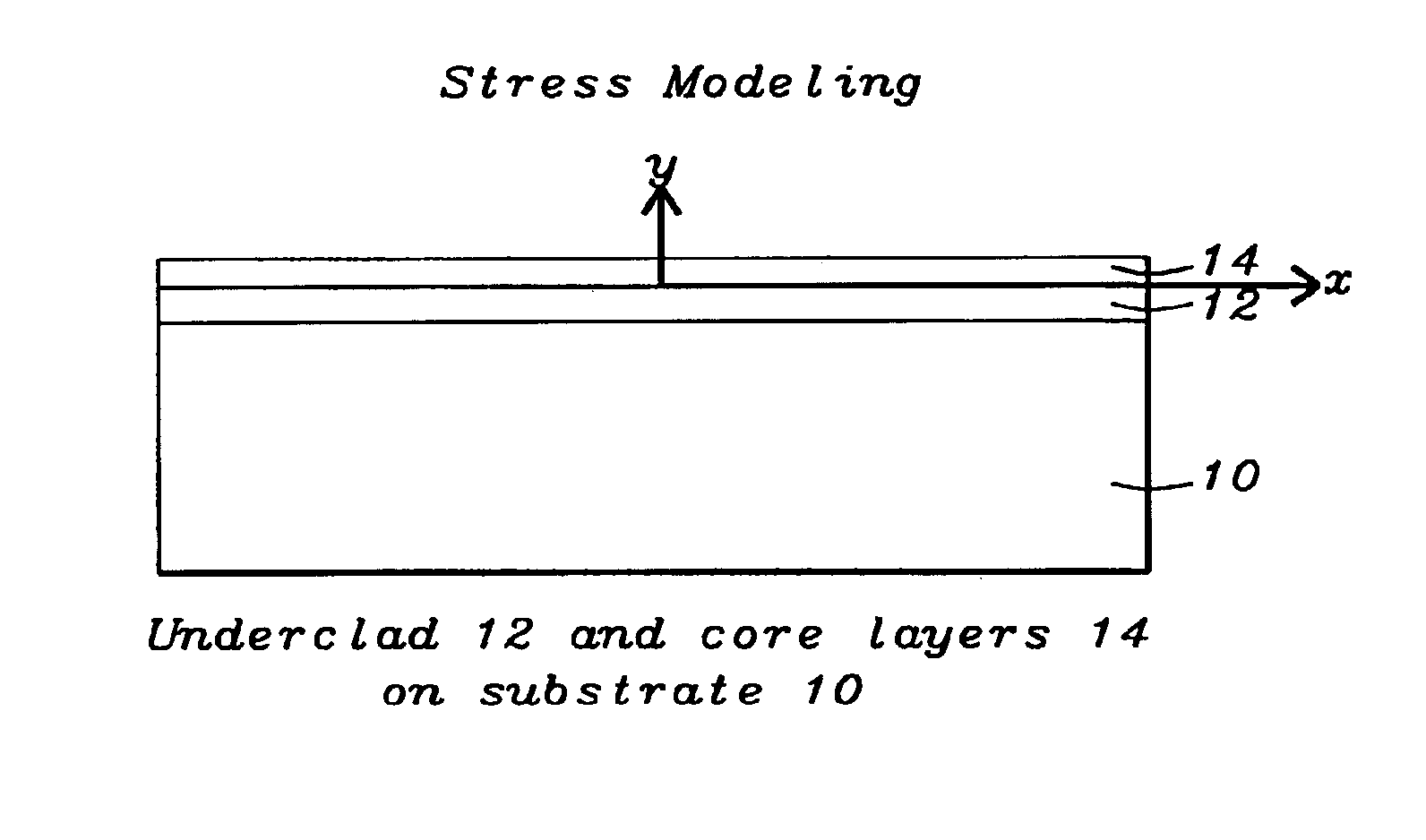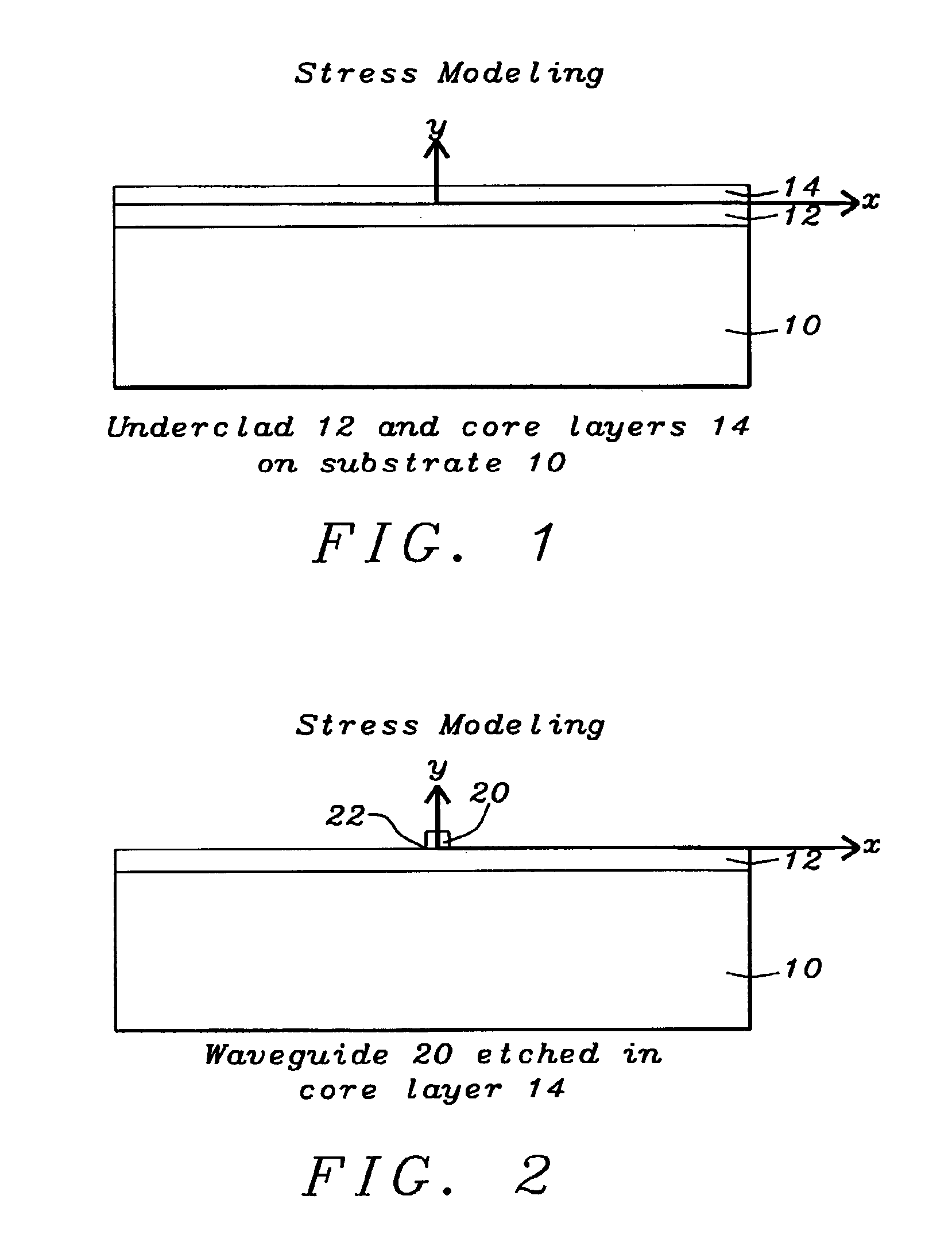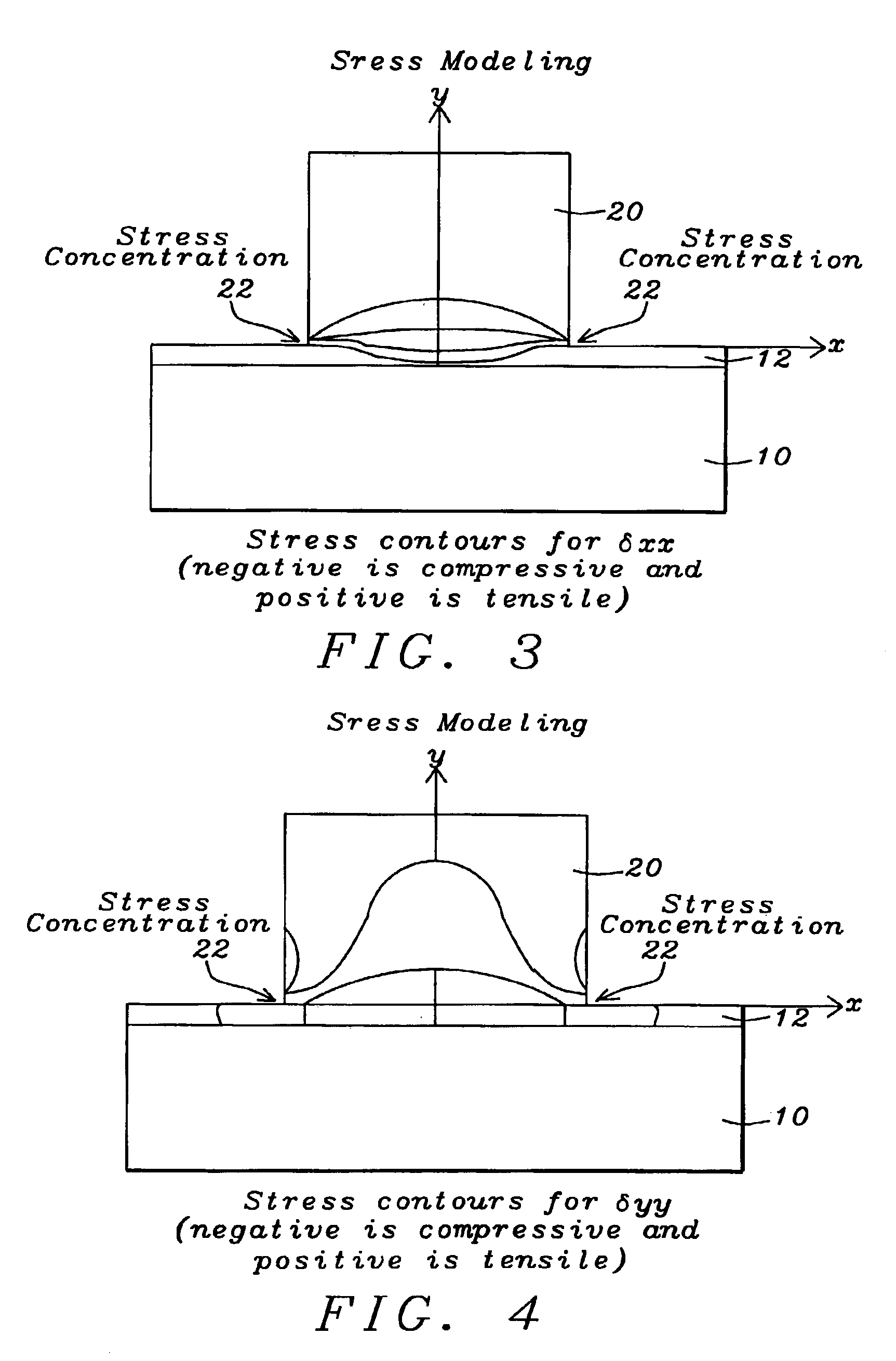Method to produce stress-free optical waveguides to reduce stress-induced birefringence in planar lightwave circuit (PLC) devices
a planar lightwave circuit and waveguide technology, applied in the direction of optical waveguide light guide, instruments, optics, etc., can solve the problems of birefringence or polarization sensitivity is undesirable for most optical devices, and the waveguide b>20/b> actually affecting the optical performance. to achieve the effect of reducing the stress gradien
- Summary
- Abstract
- Description
- Claims
- Application Information
AI Technical Summary
Benefits of technology
Problems solved by technology
Method used
Image
Examples
Embodiment Construction
Method / Problem Known to the Inventors—Not to be Considered Prior Art for the Purposes of the Present Invention
[0018]Planar Lightwave Circuit (PLC) is the technology of constructing optical devices on substrates similar to making semiconductor devices or magnetic heads. Optical waveguides of silica are formed on either silica substrates or silicon substrates. Such optical waveguides, are generally rectangular in shape and are formed by employing an etching process such as, for example, a reactive-ion etch (RIE) process.
[0019]The PLC process begins with the deposition of a layer of underclad material on the substrate followed by a layer of core material. A pattern of waveguides of the optical device to be formed is etched into the core layer, preferably by using a mask. The overclad material is then deposited to fill the space around the waveguides and also to provide a layer on top of the waveguides. The refractive index of the core layer is generally higher than that of the undercla...
PUM
 Login to View More
Login to View More Abstract
Description
Claims
Application Information
 Login to View More
Login to View More - R&D
- Intellectual Property
- Life Sciences
- Materials
- Tech Scout
- Unparalleled Data Quality
- Higher Quality Content
- 60% Fewer Hallucinations
Browse by: Latest US Patents, China's latest patents, Technical Efficacy Thesaurus, Application Domain, Technology Topic, Popular Technical Reports.
© 2025 PatSnap. All rights reserved.Legal|Privacy policy|Modern Slavery Act Transparency Statement|Sitemap|About US| Contact US: help@patsnap.com



